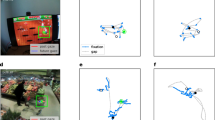Abstract
With the increasing popularity of portable eye tracking devices, one can conveniently use them to find fixation points, i.e., the location and region one is attracted by and looking at. However, region of interest alone is not enough to fully support further behavior and psychological analysis since it ignores the abundant information of visual information one perceives. Rather than the raw coordinates, we are interested to know the visual content one is looking at. In this work, we first collect a video dataset using a wearable eye tracker in an autism screening room setting with 14 different commonly used assessment tools. We then propose an improved fixation identification algorithm to select stable and reliable fixation points. The fixation points are used to localize and select object proposals in combination with object proposal generation methods. Moreover, we propose a cropping generation algorithm to determine the optimal bounding boxes of viewing objects based on the input proposals and fixation points. The resulted cropped images form a dataset for the subsequent object recognition task. We adopt the AlexNet based convolutional neural network framework for object recognition. Our evaluation metrics include classification accuracy and intersection-over-union (IoU), and the proposed framework achieves \(92.5\%\) and \(88.3\%\) recognition accuracy on different testing sessions, respectively.
Access this chapter
Tax calculation will be finalised at checkout
Purchases are for personal use only
Similar content being viewed by others
References
Yarbus, A.L.: Eye Movements and Vision. Springer, US (1967). https://doi.org/10.1007/978-1-4899-5379-7
Hayhoe, M., Ballard, D.: Eye movements in natural behavior. Trends Cogn. Sci. 9(4), 188–194 (2005)
Rayner, K.: Eye movements and attention in reading, scene perception, and visual search. Q. J. Exp. Psychol. 62(8), 1457–1506 (2009)
Lowe, D.G.: Distinctive image features from scale-invariant keypoints. Int. J. Comput. Vision 60(2), 91–110 (2004)
Dalal, N., Triggs, B.: Histograms of oriented gradients for human detection. In: IEEE Computer Society Conference on Computer Vision and Pattern Recognition, CVPR 2005, vol. 1, pp. 886–893. IEEE (2005)
Deng, J., Dong, W., Socher, R., Li, L.J., Li, K., Li, F.: ImageNet: a large-scale hierarchical image database. In: IEEE Conference on Computer Vision and Pattern Recognition, CVPR 2009, pp. 248–255 (2009)
Krizhevsky, A., Sutskever, I., Hinton, G.E.: ImageNet classification with deep convolutional neural networks. In: International Conference on Neural Information Processing Systems, pp. 1097–1105 (2012)
Jia, Y., et al.: Caffe: convolutional architecture for fast feature embedding, pp. 675–678 (2014)
Redmon, J., Farhadi, A.: YOLO9000: better, faster, stronger, pp. 6517–6525 (2016)
Toyama, T.: Object recognition system guided by gaze of the user with a wearable eye tracker. In: Mester, R., Felsberg, M. (eds.) DAGM 2011. LNCS, vol. 6835, pp. 444–449. Springer, Heidelberg (2011). https://doi.org/10.1007/978-3-642-23123-0_46
Toyama, T., Kieninger, T., Shafait, F., Dengel, A.: Gaze guided object recognition using a head-mounted eye tracker. In: Biennial Symposium on Eye Tracking Research Applications, ETRA 2012, pp. 91–98 (2012)
Shdaifat, M., Bukhari, S.S., Toyama, T., Dengel, A.: Robust object recognition in wearable eye tracking system. In: Pattern Recognition, pp. 650–654 (2016)
Positivescience eye tracker. http://positivescience.com
Positive Science. Yarbus eye-tracking software user guide (2014)
Salvucci, D.D., Goldberg, J.H.: Identifying fixations and saccades in eye-tracking protocols, pp. 71–78 (2000)
Rayner K., Castelhano, M.S.: Eye movements during reading, scene perception, visual search, and while looking at print advertisements. Visual Advertising Hillsdale (2008)
Blignaut, P.: Fixation identification: the optimum threshold for a dispersion algorithm. Attention Percept. Psychophysics 71(4), 881 (2009)
Howard, A.G.: Some improvements on deep convolutional neural network based image classification. Comput. Sci. (2013)
Acknowledgement
This research was funded in part by the National Natural Science Foundation of China (61773413), Natural Science Foundation of Guangzhou City (201707010363), Six talent peaks project in Jiangsu Province (JY-074), and Science and Technology Program of Guangzhou City (201903010040).
Author information
Authors and Affiliations
Corresponding author
Editor information
Editors and Affiliations
Rights and permissions
Copyright information
© 2019 Springer Nature Switzerland AG
About this paper
Cite this paper
Sun, S., Li, S., Liu, W., Zou, X., Li, M. (2019). Fixation Based Object Recognition in Autism Clinic Setting. In: Yu, H., Liu, J., Liu, L., Ju, Z., Liu, Y., Zhou, D. (eds) Intelligent Robotics and Applications. ICIRA 2019. Lecture Notes in Computer Science(), vol 11743. Springer, Cham. https://doi.org/10.1007/978-3-030-27538-9_53
Download citation
DOI: https://doi.org/10.1007/978-3-030-27538-9_53
Published:
Publisher Name: Springer, Cham
Print ISBN: 978-3-030-27537-2
Online ISBN: 978-3-030-27538-9
eBook Packages: Computer ScienceComputer Science (R0)




